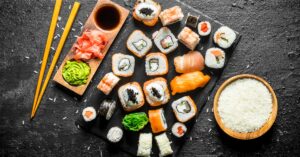There’s a reason why white foods are so popular in the culinary world.
Not only do they taste great, but they also add a splash of brightness to any dish. They’re pretty versatile, too.
From pasta and rice to garlic and mushrooms, there’s no shortage of delicious white foods. Many of them are healthy, as well.

Most people can eat cauliflower, cashews, chickpeas, and garlic, regardless of dietary restrictions.
Yogurt, bananas, pears, and tofu are more examples of nutritious white foods.
So if you’re looking for a way to add some extra nutrition to your diet, you’re in luck.

1. Parsnip
Parsnips look like white carrots and have an earthy but sweet flavor. (Similar to nuts or sweeter root veggies.)
Some people even taste licorice in their parsnips.
You can enjoy them raw, in soups, or cooked. Most people mash or roast them like potatoes.
They’re high in fiber and contain tons of vitamins and nutrients.

2. Cauliflower
Cauliflower is probably the most recognizable white vegetable. It’s crunchy and grows in floral-looking bunches.
It’s an extremely low-carb veggie, with only 5.3 net carbs per cup.
For that reason, people on ketogenic and carbohydrate-restricted diets love it.
You can snack on it, cook it, or turn it into “substitutes.” (For mashed potatoes, rice, pizza crust, etc.) It’s also high in vitamin C.

3. Milk
For most mammals, milk is the first food they’ll ever enjoy. All mammals, including the infinitely strange platypus, produce milk.
As humans get older, we usually limit ourselves to cow’s milk, goat’s milk, and milk alternatives.
One thing they all have in common: they all do a body good.
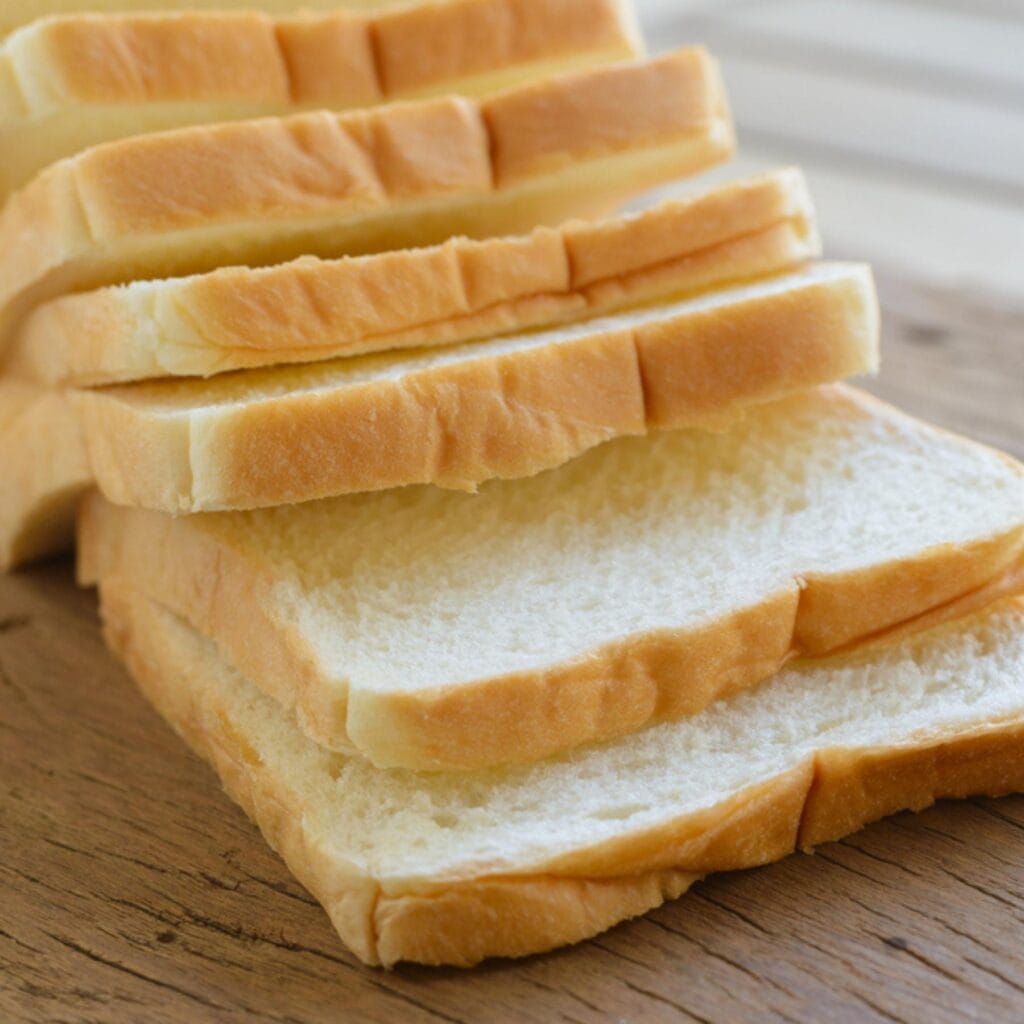
4. White Bread
White bread is America’s number one sandwich bread.
It typically has a darker, sometimes crunchier exterior but is pale white and soft inside.
Manufacturers make it by removing bran and wheat germ from wheat to form flour.
Then, they mix that flour with other ingredients, shape it, and bake it.
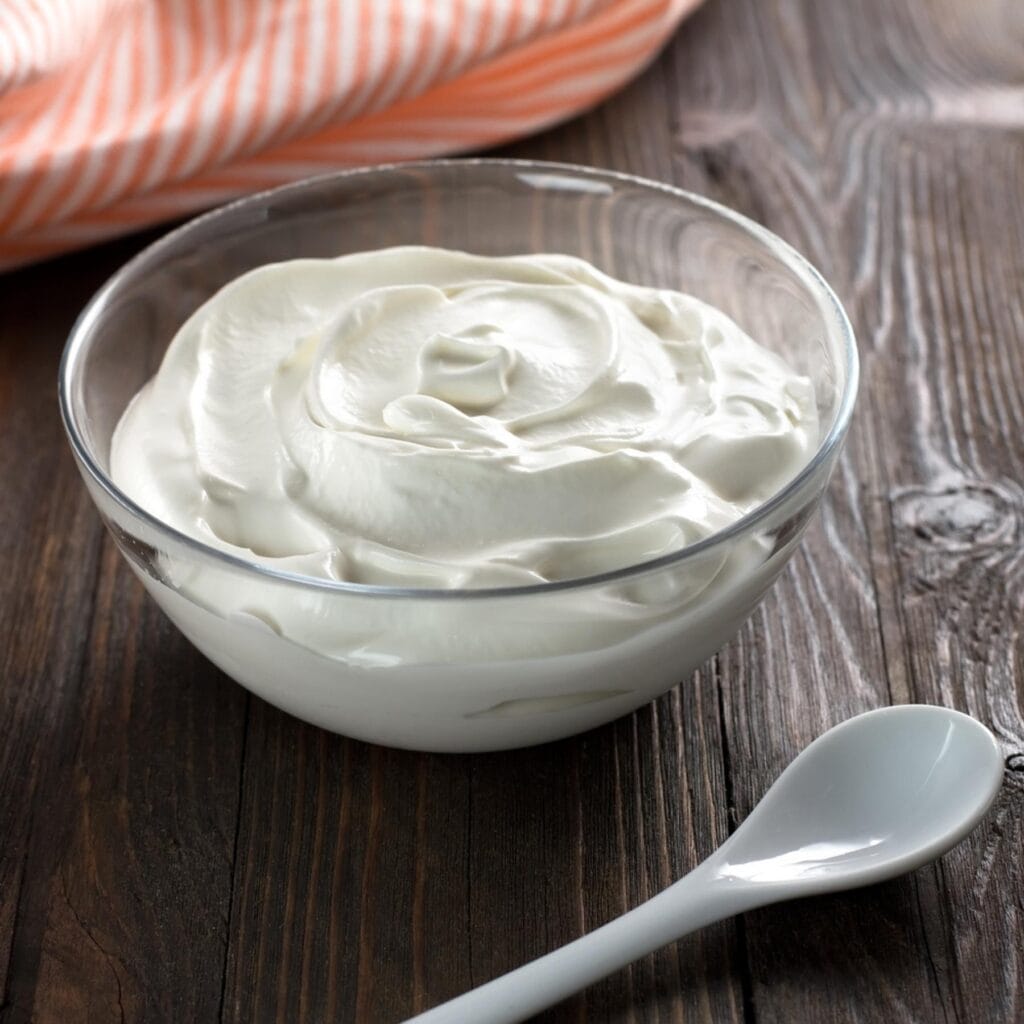
5. Greek Yogurt
There are all kinds of yogurt, and most are white. However, some may have artificial coloring or contain colorful fruits and berries.
Plain Greek yogurt is always creamy and white. It has a bright and tangy taste but is also sweet and dessert-like.
It’s full of probiotics and other healthy vitamins and minerals.

6. Bananas
Quick! What color is a banana? If you said yellow, you’re not alone. Most people would say the same.
However, the peel is the only yellow part of a banana. The banana itself is a pale, creamy, off-white color.
Chances are, you’ve had a potassium-packed banana (or a thousand) in your lifetime. If you haven’t, you’ve almost certainly seen one.

7. Pears
Like bananas, pears aren’t usually white on the outside. (Except for the Chinese white pear.) Their insides are white, however.
Pears are fruits from the family Rosaceae. They range from very sweet to tart and tangy, depending on the specific type.
Most feature a teardrop-like shape, and all are high in vitamins C and K.

8. Mushrooms
As you probably know, not all mushrooms are white. However, the ones most people eat regularly are.
These white (or button) mushrooms make up 90% of all mushrooms consumed in the U.S.
They’re soft and plump with an umbrella-like shape. They have a chewy texture and a mild flavor.
Mostly, they take on the flavors of the other ingredients in a recipe.

9. Tofu
In today’s health-conscious world, tofu is becoming more popular. What most people don’t realize, however, is that tofu is old. One of the world’s oldest foods, in fact.
It comes in different varieties, including:
- Silken
- Soft
- Firm
- Extra firm
- Super firm
It’s high in protein and often used by vegetarians to replace meat.
Manufacturers make it from soy milk, and it has a mild, unassuming flavor.

10. White Onions
Onions are pungent vegetables that most people smell before they see them.
They’re round and have several layers of flaky, papery skin on their outsides.
They’re incredibly healthy. Unfortunately, they also leave you with killer breath, which is why some people avoid them.

11. White Rice
Although more popular than its brown counterpart, white rice isn’t nearly as healthy.
It’s starchy and lacks much of the nutritional value of brown rice.
White rice undergoes a process that removes its gran, germ, and husk.
That makes it prettier and whiter but not healthier. Still, people enjoy rice all over the world.
In China, approximately 154.8 million metric tons of rice are consumed yearly. (Not all of that is white rice, however.)

12. White Pasta
There are plenty of different types of white pasta. The one most people know is fettuccine alfredo.
In that tasty dish, both the noodles and the sauce are white. Pasta covered in Béchamel sauce or various cheese sauces is also white.

13. Potatoes
Potatoes come in shades ranging from white to black. Many of them are white on the inside, regardless of their skin.
For example, russet potatoes, red potatoes, and fingerlings are all white inside.
A couple of potato types are known as ‘white potatoes,’ though.
They’re broken into two categories: round white and long white. All potatoes, no matter their color, are tubers.
Most of them are pretty healthy, too, if prepared correctly.

14. Popcorn
Light, airy, and crunchy, popcorn is something most people have tried. It’s a staple when you visit the movies.
Many people also like to pop a bag in the microwave at home on movie night.
Popcorn comes from corn. When exposed to heat, the kernels get so hot that they ‘pop’ open. That’s the fluffy treat we all know and love.

15. Cashews
Despite their name, cashew nuts aren’t nuts. They’re seeds from the fruit of a cashew tree.
They’re a crunchy, mild ‘nut’ often sold as snack foods worldwide.
Some companies also use them to make flour, cashew butter, etc.

16. Oats
Have you ever had oatmeal or an oatmeal raisin cookie?
If so, you’ve had oats. They’re a fiber-rich food high in carbs, vitamins, and minerals.
They’re a type of cereal that’s been around for thousands of years.
Despite being lumped in the ‘carbs and grains’ category, they’re also a good source of protein.

17. Egg Whites
Not all eggs are white on the outside. The egg whites inside are uniformly white. (Hence the name!) However, that’s only true if you cook them.
When you first break an egg open, the egg white is clear. It isn’t until it hits the pan or gets the whisk that it turns white.
Egg whites can be eaten alone or used in various recipes.
They’re high in vitamin B12, potassium, and other good things the body needs.
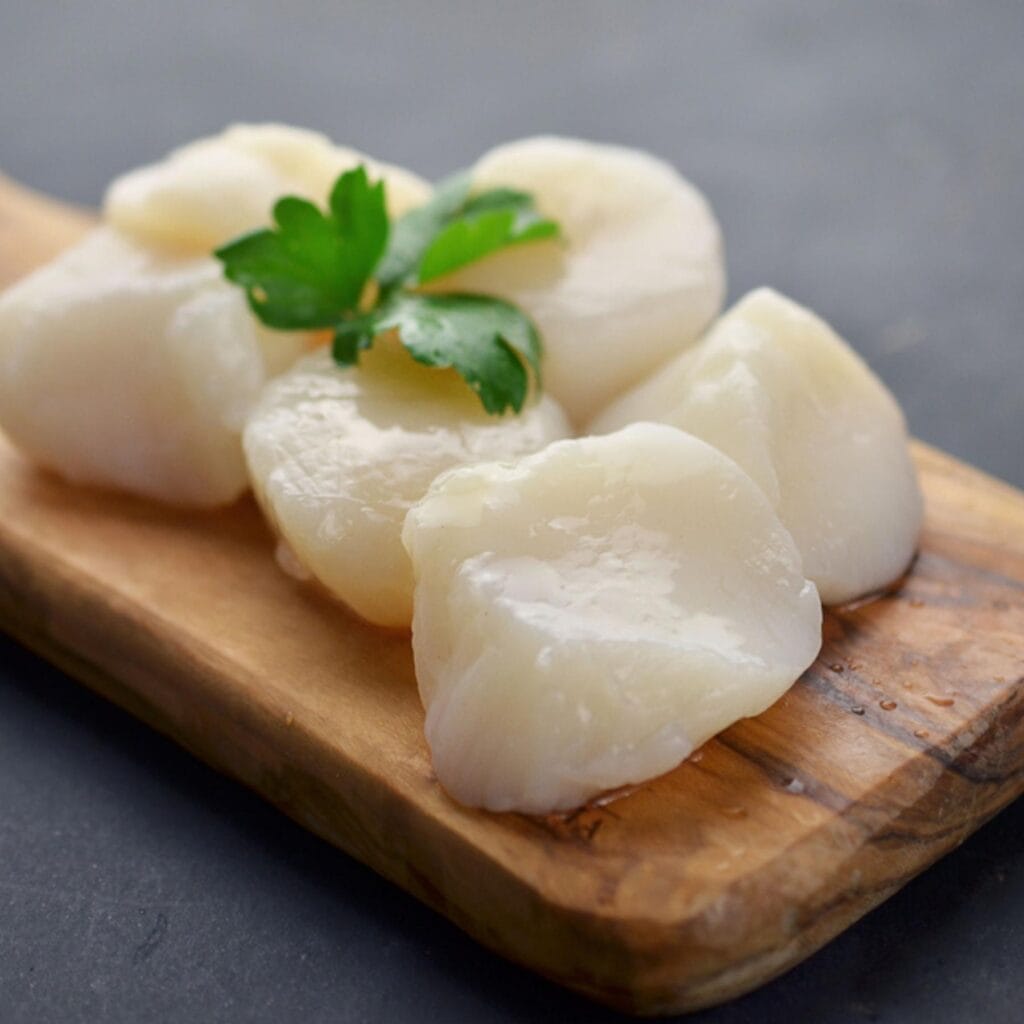
18. Scallops
Scallops are types of seafood. (Sometimes, ‘scallop’ is used to describe mollusks; sometimes, oysters.)
They have a strong umami flavor and can be cooked in various ways. After they’re cooked, they rarely remain white.
It’s only raw that they feature the bright white color.

19. White Asparagus
Despite what people think, white asparagus isn’t just pale asparagus. Instead, it’s its own variety.
While green asparagus grows above ground, white asparagus grows underground.
It shares many of the same health benefits as green asparagus.
The taste is similar, too, though white asparagus is slightly sweeter.

20. Daikon
Daikons look like parsnips, long, white, and carrot-like However, daikons are a type of radish.
They’re root veggies from China that taste like milder red radishes.
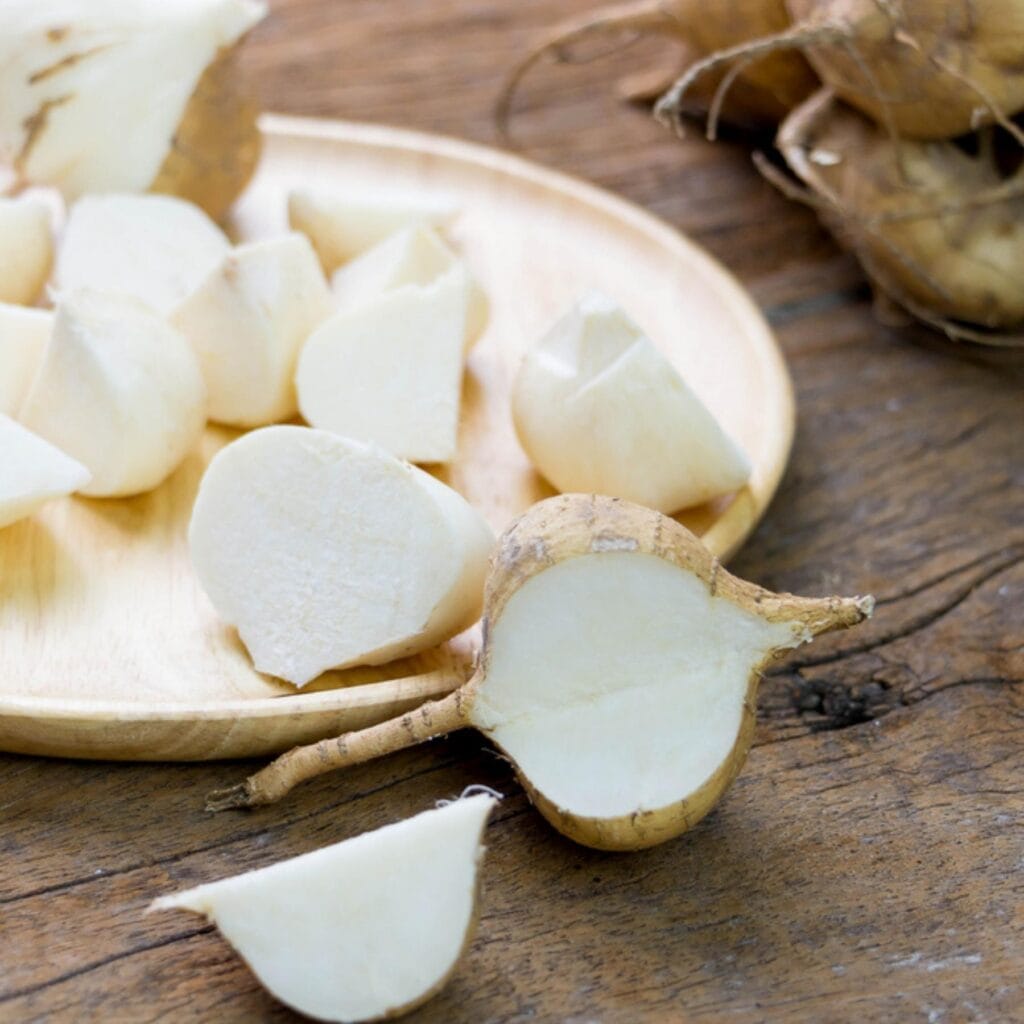
21. Jicama
Though brown on the outside, jicamas are bright white inside. You can cook them or eat them raw.
They’re high in fiber, manganese, vitamin C, and magnesium. Their flavor is sweet, slightly nutty, and absolutely delicious.
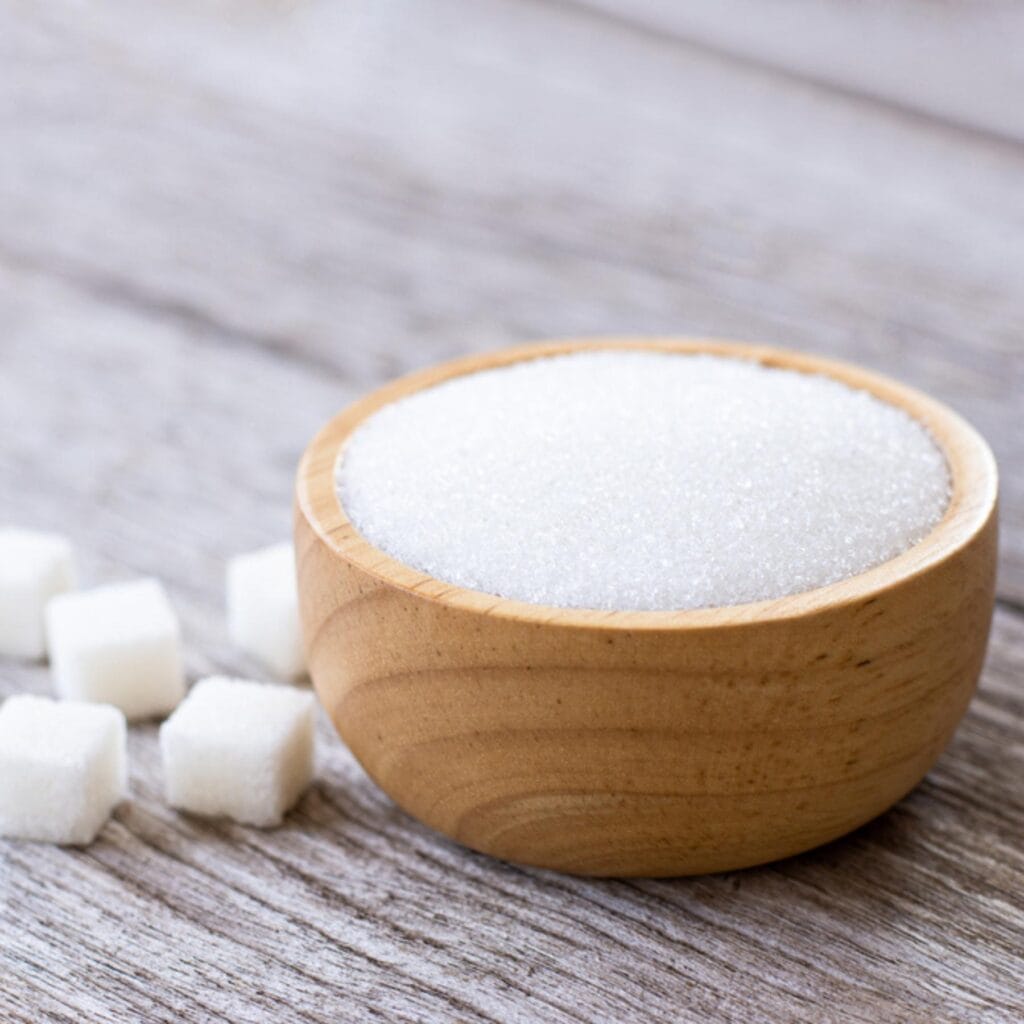
22. White Sugar
White sugar comes from beetroot and sugarcane. It undergoes a refining process that extracts sucrose.
Sucrose is then used to sweeten and flavor numerous other foods.

23. Coconut Meat
The outside of coconuts are hard, brown shells. The ‘meat’ is stark white, sweet, and tasty.
If you’ve ever had flaked coconut on a coconut cake, you’ve had coconut meat.

24. Vanilla Ice Cream
Sweet, cold, creamy, and divine. We’ve all enjoyed vanilla ice cream at least once in our lives, I’m sure.
It’s a combination of milk, sugar, and vanilla flavoring.
You can eat it by itself or on top of warm apple pie. You can eat it plain or smothered in chocolate sauce.
Either way, vanilla ice cream is hard not to love.

25. White Cheeses
White cheeses are any cheese that’s more white than yellow. These include ricotta, cotija, feta, Gruyere, and mozzarella.
White cheeses are typically milder than yellow cheeses. They’re sometimes softer and more malleable, as well.

26. Chickpeas
Chickpeas are a type of legume that originated in Turkey thousands of years ago.
They’re small and round with a pale, whitish-tan color.
You can cook and eat them in many ways. They’re also the main ingredient for most varieties of hummus.
Their warm, earthy taste has just a hint of nuttiness.

27. Garlic
Mmm… garlic. That small, white vegetable smells phenomenal and tastes even better.
It has culinary and medicinal uses and is high in many vitamins, including vitamin B6.
It’s a small vegetable with approximately six to 12 cloves inside it.
Most people use it as a fragrant and flavorful addition to their recipes.
However, if you believe the legends, it’ll also keep vampires away.









